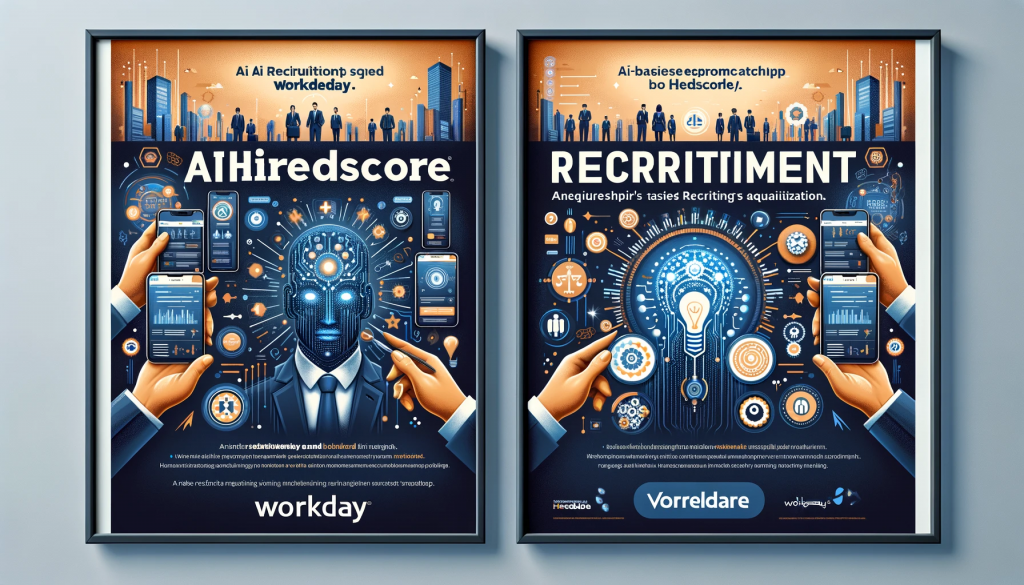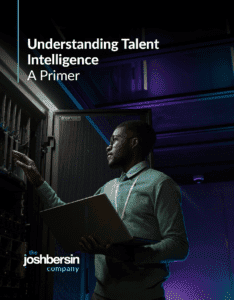Workday计划收购HiredScore,这是人力资源技术领域的一次重大变革。HiredScore是一家领先的基于AI的招聘匹配工具提供商,此举将大大增强Workday在人才智能和招聘方面的能力。这次收购预计将整合HiredScore的专长到Workday的系统中,显著改善其应聘者追踪系统(ATS)、技能云和整体人才智能产品。此战略性收购可能会重塑人力资源软件市场,迫使其他供应商加速他们的AI计划,可能激发一轮新的收购热潮。

以下是原文:
This week Workday announced intent to acquire
HiredScore, a leading provider of AI-based matching tools for recruiting (called “talent orchestration”). While it wasn’t discussed much in the earnings call, this deal is a big positive for Workday and could have many implications for the HR Tech market.
Let me explain. (I have not been briefed by Workday yet, so more information will come as I learn more.)
Right now there is a massive marketplace war for high-powered AI-based recruiting tools (
estimated at $30.1 billion). Historically dominated by applicant tracking systems (ATS), this market provides essential technology to help every company grow.
The ATS market, which is more than 25 years old, has been rapidly transformed with high-powered AI tools that help with candidate matching, search, skills inference, and sourcing. And now that AI tools are readily available, these systems are becoming big data platforms loaded with billions of employee profiles, running complex AI models to help match people to jobs, projects, and gigs.
Most ATS vendors (including Workday) have slowly extended into this space through matching. The original idea of a resume parser (software that reads a resume and scores it against a job description) has evolved into complex text analysis and AI-powered inference technology, forcing ATS vendors to invest.
As the ATS vendors enhance their AI capabilities, a parallel universe of AI-first Talent Intelligence vendors emerged. These vendors, like Eightfold, Gloat, Beamery, Phenom, Seekout, Skyhive, Retrain, and Techwolf are building skills-centric big data platforms to match people to jobs, gigs, and mentors. These systems do much more than rate matches: they identify skills, find adjacent skills, match people to careers, find mentors, and more. They are essentially open big-data AI platforms built on vector databases that can be used for many enterprise apps (job architecture design, skills planning, internal mobility, pay equity analysis, etc.). In many ways they represent the future of HR Tech.
(Read our
Talent Intelligence Primer for more.)

As the Talent Intelligence vendors grow, they start to deliver “HCM-threatening” platforms that impinge on the HCM “System of Record” idea. If you have all your employees, candidates, alumni, and prospects in Eightfold, Phenom, Seekout, or Gloat, for example, Workday or SAP look like a tactical payroll and workflow management system. (ServiceNow also understands this, and is
building talent intelligence into its workflow platform.)
Up until now the big HCM vendors like Workday, Oracle, and SAP have struggled to build these new systems, largely because their original architectures were not AI-based. So they’ve attracted customers with offerings like the Workday Skills Cloud or SAP Opportunity Marketplace that aren’t fully completed yet. We have talked with dozens of Workday Skills Cloud customers, for example, and they see it as an important “skills system of record,” but its real AI matching and inference capabilities have been limited.
Along comes HiredScore, a well respected AI-based matching system with 150 employees and 40+ seasoned AI engineers in Israel. These folks are experts at candidate matching (quite a complex problem), and they’ve built a very innovative “orchestration” system to help line managers coordinate activities with HR business partners and recruiters (more on this later). While I’m sure they’ll continue to build out HiredScore, they can also contribute to Workday’s overall talent intelligence offering, improving the entire system – including the Skills Cloud, Workday Learning, Workday’s Talent Marketplace.
As large as the recruiting software market is, the market for internal career tools, talent mobility, skills inference, and corporate learning is five times bigger. This acquisition gives Workday a shot in the arm to accelerate its entire AI platform strategy. (As
the Identified acquisition did back in 2014. Identified was the roots of the Workday Skills Cloud.)
Market Implications Of This Move
This move could change the market for HR software in a few significant ways.
First, Workday Recruiting customers will be thrilled. Workday’s ATS now benefits from a first class matching and candidate scoring solution. This helps Workday compete with the bigger ATS players and gives Workday a new revenue source as they sell HiredScore to the existing 4,000+ Workday ATS customers. (Similar to the
Peakon acquisition in Employee Experience.) And the talent orchestration features (kind of like a “staffing copilot”) gives Workday a very unique feature set.
Second, this forces Workday’s talent intelligence partners to step up their game. Remember when Apple acquired Dark Sky, the most compelling micro-weather app on the market? Once they integrated it into Apple’s other apps, the market for third party weather apps went away. Workday could limit its partner network to avoid letting HiredScore competitors into the ecosystem.
Third, this forces HCM vendors to accelerate their AI. Since HiredScore is such a well-respected product (every client we talk with adores it), it will become part of Workday demos and sales proposals quickly. Workday’s HCM competitors will start scratching around to find a similarly mature AI vendor to acquire. And that could kick off another round of acquisitions, similar to the frenzy that took place in the mid 2010s.
Finally, there’s one more scenario, and I give this good odds. Not to be outdone by Workday, the Talent Intelligence vendors may just expand their ATS capability and decide to go “full stack.” I wouldn’t be surprised to see this happen.
Why Is AI-Based Candidate Matching So Important
Why is this technology so important? Well if you’ve ever tried to recruit on Indeed or LinkedIn, you know why. The quality and reliability of “candidate matching technology” is a lynchpin of a talent platform. Just as Google Search crushed Yahoo, Excite, and Inktomi, a powerful next-gen matching tool adds an enormous amount of value. Not only does it speed talent acquisition, it fuels all the internal mobility, career portals, skills, and eventually learning and pay systems.
Why do I say this? A “match” is a sophisticated problem. Unlike a Google search which looks at text and traffic, when you search for a person to fill a role you have to think about dozens of complex relationships. What are this person’s skills and capabilities? What are their credentials or certifications? Who else are they connected with? How likely will they fit into the job, role, and company? What is the impact of their industry experience? What tools and technologies do they understand?
And it gets much more complex. The
Heidrick Navigator platform (built on Eightfold), uses AI to assess functional skills for management and leadership, identifies a person’s “ability to drive results,” and more. This important application of AI powers many of the most important decisions we make in business.
That’s why the Talent Intelligence space is growing so fast. As of this week there are more than 1,800 Director or VPs of “Talent Intelligence” in LinkedIn, and that number is up almost six-fold from one year ago.
Can Workday take the lead in this emerging space? It’s impossible to tell at this point, but the horses have left the gate and the race is on. This deal sets the players in the right lanes and feels like the earthquake to shake things up.





